#Hedgenettle
Explore tagged Tumblr posts
Text
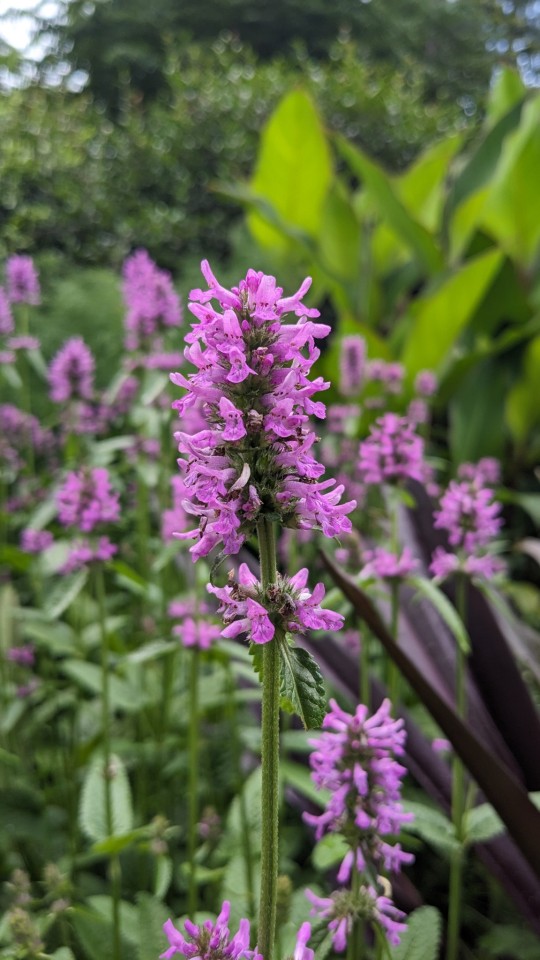
Betonica officinalis / Bishopwort at the Sarah P. Duke Gardens at Duke University in Durham, NC
#Betonica officinalis#Betonica#Lamiaceae#Bishopwort#Common hedgenettle#Hedgenettle#Betony#Purple betony#Wood betony#Bishop's Wort#Plants#Flowers#Nature photography#photography#photographers on tumblr#Sarah P. Duke Gardens#Duke Gardens#Duke University#Durham#Durham NC#North Carolina#🌺🌻
6 notes
·
View notes
Text

#etsy#smallbiz#macro#photography#nikon#lambs ear#hedgenettle#stachys#etsy gifts#etsy finds#etsy seller#etsy shop#etsy store#shop small
0 notes
Text
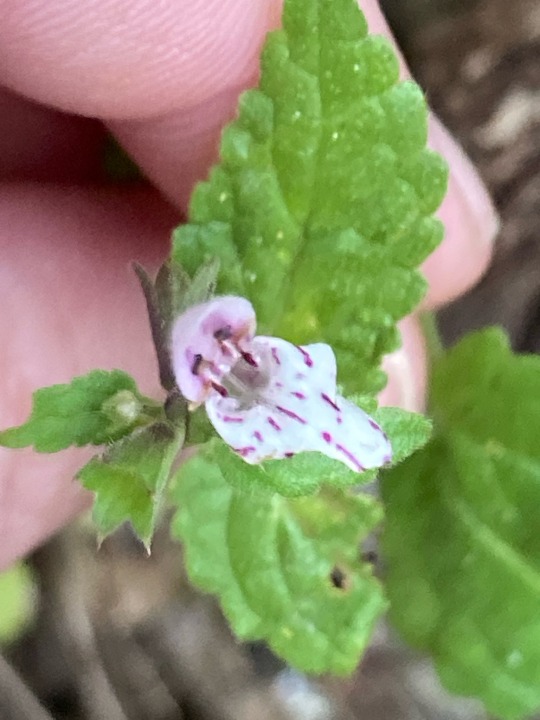
1 note
·
View note
Text
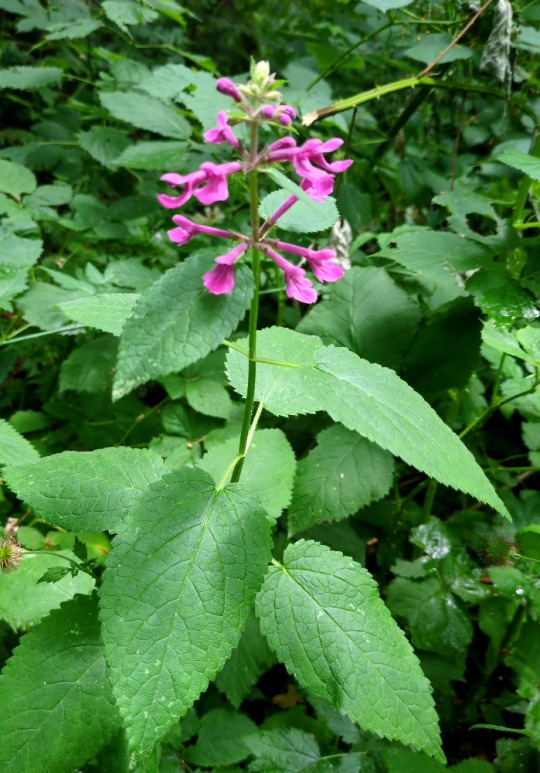
It’s Tell a Friend Friday! Please enjoy this picture of coastal hedgenettle (Stachys chamissonis) taken at Tryon Creek State Natural Area in Portland, OR.
Then tell someone you know about my work–you can reblog this post, or send it to someone you think may be interested in my natural history writing, classes, and tours, as well as my upcoming book, The Everyday Naturalist: How to Identify Animals, Plants, and Fungi Wherever You Go. Here’s where I can be found online:
Website - http://www.rebeccalexa.com
Rebecca Lexa, Naturalist Facebook Page – https://www.facebook.com/rebeccalexanaturalist
Tumblr Profile – http://rebeccathenaturalist.tumblr.com
BlueSky Profile - https://bsky.app/profile/rebeccanaturalist.bsky.social
Twitter Profile – http://www.twitter.com/rebecca_lexa
Instagram Profile – https://www.instagram.com/rebeccathenaturalist/
YouTube Profile - https://www.youtube.com/@RebeccaLexaNaturalist
LinkedIn Profile – http://www.linkedin.com/in/rebeccalexanaturalist
iNaturalist Profile – https://www.inaturalist.org/people/rebeccalexa
Finally, if you like what I’m doing here, you can give me a tip at http://ko-fi.com/rebeccathenaturalist
#naturalist#Tell a Friend Friday#coastal hedgenettle#wildflowers#native plants#botany#plants#PNW#Pacific Northwest#Oregon#nature#ecology#scicomm#science communication#Portland#Tryon Creek
1 note
·
View note
Text
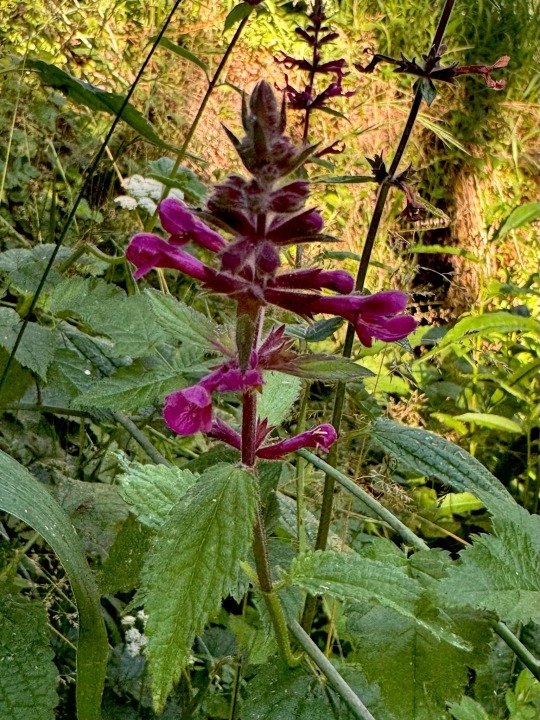
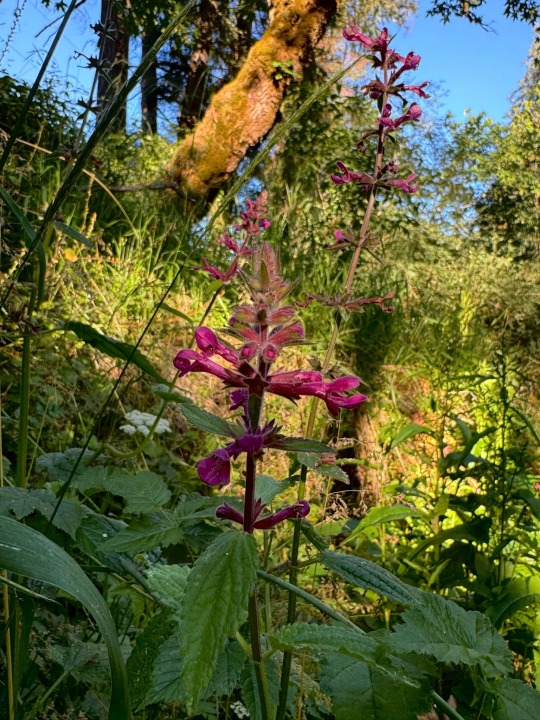
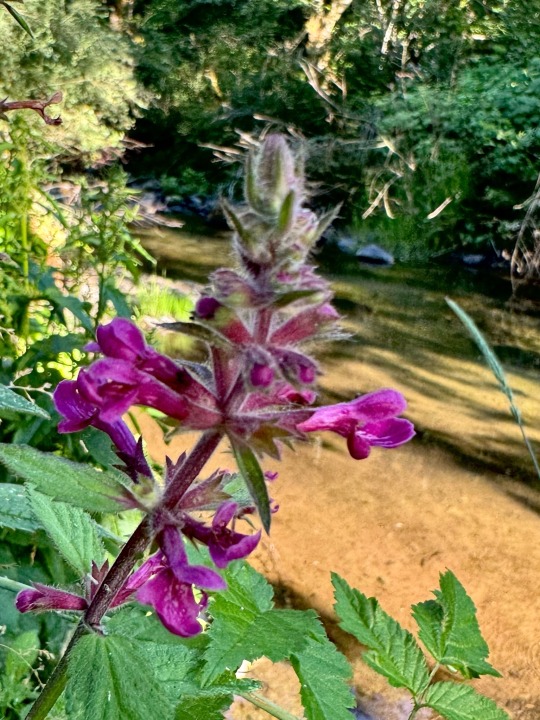
cool of the evening..
Stachys chamissonis..Stacys hedgenettle
157 notes
·
View notes
Text



Day 15! Superfine merino and peduncle silk. This one came out a really lovely subtle silvery green, and is also maybe the nicest yarn I have ever touched. It's not necessarily the softest or the fuzziest but it's just. so nice to touch.
It's hard to describe. Have you ever touched that plant? The one with the soft fuzzy leaves? Lamb's ear, woolly hedgenettle, stachys byzantina? It feels like the most perfect leaf of that you've ever touched. I'm in love with it. I want this to be socks and gloves and hats and scarfs and a full body suit. Which I think you would all agree would be a super normal and cool outfit to wear ✨
(day 14)
#wowfa24#spinning yarn#handspinning#hand spinning#handspun#spinning#yarn#fiber arts#world of wool fiber advent#allonsybadwolf#my handspun
31 notes
·
View notes
Text
CONTENTS
PSA!
Content Warnings!
Formatting
Words You'll See & What They Mean
Herbs & Medicines
Poisons
.
.
.
PSA!
These plants are using HUMAN effects! Do not feed your cat these plants for funsies, because they can be deadly! Also, heads up, this post contains plants primarily from the UK and North America, since the books take place in England and borrow animals from North America. There are also a few plants from... neither place!
.
CWs!
Mentions of vomit, sickness, & death. Long post.
.
Formatting
Scientific Name; Points towards which species I was looking at
Description; Appearance, taste, & smell
Location; Where they’re best found
Grows; The time of year they’re found
Usage; How they’re used (i.e. eaten, chewed, etc)
Effect; What they do
.
WORDS YOU’LL SEE & WHAT THEY MEAN
Poultice; A medicinal method where one or more herbs are soaked in water, chewed together to make a wet mass, then applied to the body of the patient. Honey is often added to thicken the poultice and help the herbs stick together.
Paste; The middle ground between poultice and pulp, pastes are prepared the same as poultices. They can either be spread onto a wound or eaten by a patient.
Pulp; When two or more herbs are chewed into mush and eaten by a patient. Nectar or honey may be added to make the pulp less bitter or more appealing.
Ointment; Two or more herbs mixed with lots of water, honey, herb extract, and/or nectar and rubbed onto the patient’s body. Herbs are chewed into a pulp, mixed with liquid(s), and let sit to thicken for several hours.
Herb Extract; Juices that come from herbs. Can be made either by kneading a herb (with things such as basil, borage, and lovage) or breaking the stems (with things such as milkweed and dandelion stems).
.
HERBS & MEDICINES
╭━ ⋅𖥔⋅ ━━(A)━━ ⋅𖥔⋅ ━╮ Alder Bark Scientific Name; Alnus Description; Alder trees have dark grey bark- greenish on younger trees. Location; On alder trees ; Along rivers ; In swampy, boggy, and marshy areas Grows; All year round Usage; Chewed by patient Effect; Eases toothaches
Alfalfa Scientific Name; Medicago Sativa Description; A tall plant with long, narrow leaves and purple, yellow, or white flowers. It smells overpoweringly sweet as it blooms, and doesn’t have much of a taste beyond a vague nuttiness. Location; Rocky places with shallow soil ; Alongside Thunderpaths Grows; Mid- to late spring and early to late autumn Usage; Eaten by patient Effect; Prevents tooth decay
Ash Tree Sprouts Scientific Name; Fraxinus Description; A thin sprout with two small leaves. Location; Forests Grows; All year round Usage; Chewed into a poultice and placed on wound Effect; Treats poison from snake bites
╰━ ⋅𖥔⋅ ━━✶━━ ⋅𖥔⋅ ━╯
╭━ ⋅𖥔⋅ ━━(B)━━ ⋅𖥔⋅ ━╮ Basil Scientific Name; Ocimum Basilicum Description; An herb with square stems and rounded, slightly curved leaves. It smells and tastes sweet and slightly pungent. The plant doesn’t do well in the cold, and dies by the first frost of the year. Location; Hot, dry areas ; Twoleg gardens Grows; Late spring to very early autumn Usage; Eaten by patient Effect; Soothes headaches and cramping
Betony / Hedgenettle Scientific Name; Stachys Officinalis Description; Square, hairy stems with tall purple flowers with toothed leaves. This plant has a charming, spicy, and earthy odor. Its flavor is slightly spicy, with hints of bitter mint. Location; Meadows ; Open woodlands Grows; Late spring to autumn Usage; Eaten by patient Effect; Eases headaches & migraines
Bindweed Scientific Name; Convolvulus Tricolor Description; Bindweed flowers are trumpet-shaped and bright blue with a white center ring surrounding a yellow center. It has a very strong smell. Location; Farmlands ; Grassy slopes ; In pastures ; Alongside Thunderpaths Grows; Summer to early autumn Usage; Binds sticks together Effect; No medicinal use, but can be used to tie sticks to a broken limb
Birch Sap Scientific Name; Betula Description; Best collected from young trees, when their bark is soft. Location; Within birch trees ; Almost anywhere Grows; All year round Usage; Swallowed by patient Effect; Gives energy ; Creates an appetite
Blackberry Leaves Scientific Name; Rubus subg. Rubus Description; The plant has pinkish-white flowers with five petals each. The berries and leaves have a sharp, recognizable scent. Location; On blackberry bushes ; Almost anywhere ; Sunny places Grows; Mid-spring to late autumn ; Berries grow mid-summer to early autumn Usage; Coated on area of sting Effect; Mixed with other herbs into a poultice to soothe the pain of bee stings
Blazing Star Scientific Name; Mentzelia Laevicaulis Description; A flower with spiky leaves. Its five bright yellow petals point out and resemble a star, giving it its name. Location; Sandy and rocky places ; Alongside Thunderpaths Grows; Mid- to late summer Usage; Eaten by patient Effect; Cures cowpox ; Soothes stomachaches ; Treats open skin sores
Blessed Thistle Leaves Scientific Name; Cnicus Benedictus Description; A tall plant with sharp, spiked leaves and hairy stems. The flowers at the top are yellow or purple, and the leaves have a bitter taste. Location; Sunny, dry, rocky areas Grows; Mid-summer to early fall Usage; Spikes removed ; Eaten by patient Effect; Strengthens heart and lungs ; Improves appetite ; Treats colds, coughs, fevers, and bacterial infections
Borage Scientific Name; Borago Officinalis Description; The flower has five small blue or pink petals and hairy leaves. The best leaves are about halfway up the stem and have a zesty smell to them. They’re soft and have a distinctive taste, which they lose when dried out. Location; Near water ; In sunny areas ; Forests Grows; Early summer to mid-autumn Usage; Eaten by patient Effect; Produces better & more milk in nursing cats ; Brings down fevers ; Soothes stomachaches ; Relieves tight chests
Bright-Eye Scientific Name; Phlox Paniculata Description; Light pink flowers with a dark pink center. It smells something like cannabis, and it tastes sweet, slightly spicy, and something like sugarsnap peas. Location; Sunny areas ; Wooded areas ; Thickets Grows; Mid to late summer Usage; Crushed into a pulp with other herbs and eaten by patient Effect; Cures coughs (when combined with lovage)
Broom Scientific Name; Cytisus Scoparius Description; A shrub with small leaves and little yellow flowers. The flowers are often on their own stem, but can also grow in pairs. Broom is wind-tolerant and drought-resistant when established. Location; Forests ; Sunny places Grows; Early spring to late autumn Usage; Ground into a poultice Effect; Assists in the healing of broken bones
Burdock Root Scientific Name; Arctium Minus Description; A tall-stemmed thistle with a sharp smell and dark leaves. It has a bitter taste. Location; Almost anywhere Grows; All year round Usage; Chewed into a poultice - ensure that any dirt has been washed off first - and placed on the wound area. Effect; Numbs and heals rat bites, particularly when infected ; Soothes sore paw pads ; Causes nausea if eaten
Burnet Scientific Name; Sanguisorba Officinalis Description; A plant with globed pink flowers and leaves in small clusters. They taste and smell almost like cucumbers. Location; In sunny forest areas Grows; Mid-spring to late autumn Usage; Chewed and swallowed by patient ; Good for cats close to giving birth and cats who are about to travel Effect; Gives strength ; Reduces hunger, bleeding, and inflammation ; Kills stomach parasites
╰━ ⋅𖥔⋅ ━━✶━━ ⋅𖥔⋅ ━╯
╭━ ⋅𖥔⋅ ━━(C)━━ ⋅𖥔⋅ ━╮ Catchweed Scientific Name; Galium Aparine L. Description; A tall plant with fuzzy green balls and white flowers on the end. When it's matured, it turns brown and develops small hooks that catch in furs and pelts. It has a pleasant, crisp smell to it, like fresh-cut hay. Location; Moist, shady places ; Forests ; Meadows ; Prairies Grows; All year round Usage; Placed on patient’s pelt to keep poultices in place Effect; No medicinal effect, but keeps poultices in place without pain if cobwebs are not available
Catmint Scientific Name; Nepeta Racemosa Description; A tall, leafy plant with a delicious smell. The stem is hairy and the flowers are pale purple. It looks almost like nettle, but doesn’t sting. Easily killed by frost, but very tolerant of droughts. Location; Twoleg gardens ; Dry soil ; Sunny places Grows; Late spring to early fall Usage; Eaten by patient Effect; Cures greencough ; Soothes whitecough ; Deadly in high doses
Cat’s Claw Scientific Name; Dolichandra Unguis-cati Description; A creeping vine with sunny yellow flowers. The flowers have five rounded petals. The plant grows quickly and aggressively, and is very destructive. It gets its name from its sharp thorns shaped like a cat’s claws. The flowers smell fragrant and tastes bitter and woody. Location; Sunny places ; Forests Grows; Late spring to early summer Usage; Crushed and eaten by patient Effect; May prevent pregnancy ; Soothes swelling, arthritis, and ragged breathing
Celandine Scientific Name; Stylophorum Diphyllum Description; A yellow flower with four petals. It has an odd, unpleasant, almost garlicky odor and a bitter taste. Location; Wooded areas ; Near water Grows; Mid-spring to early summer Usage; Crushed into an extract and dripped into the patient’s eyes Effect; Soothes weakened, infected, and damaged eyes
Chamomile Scientific Name; Chamaemelum Nobile Description; A small white flower with a large yellow center. It has a mellow, sweet taste to it and smells sweet and fresh. Location; Twoleg gardens ; Sandy soils ; Cool places Grows; Mid-spring to late summer Usage; Eaten by patient Effect; Strengthens the heart ; Soothes the mind
Chervil Scientific Name; Anthriscus Cerefolium Description; A sweet-smelling plant with large, fern-like leaves, small white flowers, and knobby brown roots. It tastes and smells mildly sweet and grassy. Location; Twoleg gardens ; Cool places ; Dry areas Grows; Early spring to late summer Usage; Chewed into a paste and placed on wound area or swallowed by patient Effect; Soothes infected wounds ; Soothes stomachaches ; May be used as pain relief during kitting
Chickweed Scientific Name; Stellaria Media Description; A tall plant with flat, almond-shaped leaves. It smells almost minty, and tastes salty and leafy. Location; Very sunny areas ; Forests ; Damp soil Grows; Early spring to late autumn Usage; Eaten by patient Effect; Treats greencough- though catmint is preferred as it does a better job
Cobnuts / Hazelnuts Description; A smooth brown nut with a hard outside shell. They taste sweet, musty, and earthy. Location; Around or on hazel trees Ripens; Early to late autumn Usage; Eaten by patient Effect; Improves insulin sensitivity ; Strengthens heart ; Reduces inflammation
Cobwebs Description; Long, thin, shiny strands of silk woven into a web by spiders. Location; Just about anywhere ; Dark places Grows; All year round Usage; Pressed on or wrapped around wound Effect; Soaks up and stops bleeding ; Holds poultices in place
Coltsfoot Scientific Name; Tussilago Farfara Description; A flower with yellow or white petals resembling dandelions that smells almost like honey. It’s a bit crunchy, and tastes like aniseed and licorice. Location; Near water Grows; Early spring to mid-summer ; Best in spring Usage; Chewed into a paste and placed on wound area or eaten by patient Effect; Eases rough breathing ; Cures kittencough ; Soothes cracked and sore paw pads
Comfrey Root Scientific Name; Symphytum Officinale Description; A plant with large leaves and bell-shaped pink, white, or purple flowers. It has fat brown roots and a tangy smell. Location; Damp and grassy places Grows; Mid-spring to late autumn Usage; Chewed into a paste and eaten by patient or placed on wound Effect; Soothes wounds, itching, inflamed joints, and stiff shoulders ; May be used to soothe and treat burns
Cranberries Scientific Name; Vaccinium Macrocarpon Description; Cranberry stems are wiry and long, and the leaves are small, oval, and evergreen. Small flowers appear in early summer, and the berries are ripe by early autumn. The berries taste bright and tart. Location; Swamps ; Bogs ; Marshes Grows; Summer to autumn Usage; Eaten by patient Effect; Reduce inflammation ; Lowers blood pressure
╰━ ⋅𖥔⋅ ━━✶━━ ⋅𖥔⋅ ━╯
╭━ ⋅𖥔⋅ ━━(D)━━ ⋅𖥔⋅ ━╮ Daisy Leaves Scientific Name; Bellis Perennis Description; A white or pale pinkish flower with a bright yellow center. It has thick oval-shaped leaves, a woody, earthy smell, and a bitter, nutty taste. Location; Shaded, grassy areas ; Forests Grows; Late spring to early autumn Usage; Chewed into pulp and eaten by patient ; May be used as a traveling herb Effect; Eases joint pain
Dandelion Scientific Name; Taraxacum Platycarpum Description; A yellow flower with long, hollow stems. After it’s finished flowering, the head turns into a sphere of small white florets and seeds. They have a tangy, slightly bitter taste similar to spinach and a subtle, bittersweet smell. Location; Just about anywhere Grows; Late spring to late autumn Usage; Leaves- chewed by patient ; Stem- broken and squeezed to extract juice, mixed into a poultice, and placed on area of sting ; Roots- eaten by patient Effect; Leaves- soothe pain ; Stem- soothes bee stings ; Roots- may combat poisoning by meadow saffron
Dock Leaves Scientific Name; Rumex Obtusifolius Description; A large-leafed plant with a tangy smell and taste. Location; Grassy areas Grows; Early spring to mid-autumn Usage; Chewed into a poultice and spread on wound Effect; Soothes scratches ; Soothes sore paw pads ; May sting when applied
Dried Oak Leaves Scientific Name; Quercus Description; Roundish, ruffled leaves Location; On or near oak trees Grows; Best found in autumn Usage; Chewed into a pulp and placed on wound Effect; Prevents infection
╰━ ⋅𖥔⋅ ━━✶━━ ⋅𖥔⋅ ━╯
╭━ ⋅𖥔⋅ ━━(E)━━ ⋅𖥔⋅ ━╮ Echinacea / Coneflowers Scientific Name; Echinacea Purpurea Description; Most of these flowers are magenta or purple, but some can be white, orange, yellow, or red. They have a light, sweet, honey-like fragrance and an earthy, floral taste. Location; Dry plains ; Prairies; Forest clearings Grows; Early summer to early autumn Usage; Chewed into a poultice and placed on wound Effect; Treats infection
Elder Leaves Scientific Name; Sambucus Description; Elder leaves are longer than they are wide, with small serrated edges and hair on the underside. The flowers of the tree appear in spring and grow in large clusters, and the berries are small and black. Location; On or near elder trees, often in groups of five to nine Grows; Early spring to mid-autumn Usage; Chewed into a poultice and placed on wound Effect; Soothes pain from sprains and dislocated joints
Eyebright Scientific Name; Euphrasia Nemorosa Description; A small flower that grows close to the ground. It’s nearly impossible to identify until it blooms, as it tends to blend in with the plants around it. It has small oval leaves and white flowers. The petals have purple streaks and black centers and a yellow dot in the middle. It has very little smell, but has a characteristic bitter taste. Location; Fields ; Roadsides Grows; Summer to early fall Usage; Leaves and petals are soaked in water and gently placed on the eyes of the patient Effect; Soothes redness, pain, swelling, and fatigue in the eye
╰━ ⋅𖥔⋅ ━━✶━━ ⋅𖥔⋅ ━╯
╭━ ⋅𖥔⋅ ━━(F)━━ ⋅𖥔⋅ ━╮ Fennel Scientific Name; Foeniculum Vulgare Description; A plant with thin, spiky leaves, a deep, sweet smell almost like licorice, and a mild flavor. It cannot stand the cold particularly well, and will die by the first frost. Location; Dry soils ; Riverbanks Grows; Early summer to first frost Usage; Stalks are broken and squeezed to extract juice- juice is then swallowed by patient Effect; Soothes hip pain
Feverfew Scientific Name; Tanacetum Parthenium Description; A small bush with white flowers resembling daisies. Has a sharp, tangy smell and small, soft leaves. Location; Alongside water Grows; Mid-summer to late autumn Usage; Eaten by patient Effect; Reduces fevers ; Soothes headaches
Foxglove Scientific Name; Digitalis Purpurea Description; A very tall pink or purple flower in a cone shape and with hairy oval leaves. It smells just a little bit bad. Location; Almost everywhere ; Wet soils Grows; Late spring to early summer Usage; Flowers and seeds- eaten by patient ; Leaves- chewed into a poultice and placed on wound Effect; Flowers- induce vomiting ; Leaves- stop bleeding quickly ; Seeds- slow down the heart and calm a panicking patient- should be used in very small, very infrequent quantities, as too much could cause heart failure
╰━ ⋅𖥔⋅ ━━✶━━ ⋅𖥔⋅ ━╯
╭━ ⋅𖥔⋅ ━━(G)━━ ⋅𖥔⋅ ━╮ Ginger Root Scientific Name; Zingiber Officinale Description; The plant has a tall stalk and long, thin leaves. The root itself is a light brown on the outside and a yellowy-orange on the inside. It has a citrus scent and a warm, fiery taste. Location; Slightly shaded areas Grows; Early summer to late autumn Usage; Eaten by patient Effect; Soothes coughing
Goat Weed Scientific Name; Epimedium Description; A plant with thin oval leaves and tiny, spider-like yellow, white, pink, or orange flowers. It has a bitter taste to it. Location; Twoleg gardens Grows; Spring to mid-autumn Usage; Eaten by patient Effect; Soothes anxiety and grief
Goldenrod Scientific Name; Solidago Virgaurea Description; A tall flower with bright yellow petals. The taste is a little spicy, but mostly bitter, and smells like licorice when crushed. Location; Moors ; Plains ; Meadows Grows; Mid-summer to late autumn Usage; Chewed into a poultice and placed on wound Effect; Helps heal wounds ; Eases stiffness and joint pain
Goldenseal / Orangeroot Scientific Name; Hydrastis Canadensis Description; A small plant that’s slowly becoming more and more rare due to overharvesting and loss of habitat. It has a single haired stem, two jagged leaves with five lobes, and a small white flower on the top. It grows red berries which, though they look appealing, are quite poisonous. The root is twisted and wrinkled and has a bitter taste to it, but can be used to make yellow dye and ward off insects. Location; Deep woods Grows; Spring to early summer Usage; Crushed and eaten by patient or placed on wound Effect; Boosts the immune system ; Fights infections ; Reduces fever ; Soothes colds and allergies ; The root can be made into an insecticide
Goosegrass Scientific Name; Eleusine Description; A plant growing in a matted clump. It has long dark green stalks fanning out from the soil, the center is pale, and the stalks slightly hairy. It smells similar to freshly mowed hay, and tastes sweet and similar to peas. Location; Wet, sunny areas ; Along rivers, streams, and lakes Grows; Late spring to late summer Usage; Chewed into a poultice and placed on wound Effect; Stops bleeding
Gumweed Scientific Name; Grindelia Squarrosa Description; The plant itself is tall, the leaves toothed and twisted towards the sun, and the flowers a bright yellow. It has a nice smell, but tastes very bitter. Location; Plains ; Alongside rivers, streams, and Thunderpaths Grows; Mid summer to mid autumn Usage; Chewed into a poultice and placed on wound Effect; Helps the skin close faster on an injury ; May sting when applied
╰━ ⋅𖥔⋅ ━━✶━━ ⋅𖥔⋅ ━╯
╭━ ⋅𖥔⋅ ━━(H)━━ ⋅𖥔⋅ ━╮ Hawkweed Scientific Name; Hieracium Aurantiacum Description; A small plant with yellow and orange flowers. They have a slight bitter taste. Location; Clearings ; Meadows ; Fields ; Alongside Thunderpaths ; Sunny places Grows; Late spring to late summer Usage; Eaten by patient Effect; Treats greencough- though catmint is preferred as it does a better job
Hawthorne Berries Scientific Name; Crataegus Description; Hawthorn bushes have toothed leaves and pink or white flowers. The fruit color varies from reddish orange to bluish black, and both can be used for medicine. The berries have a tart and slightly sweet taste. Location; Forests Ripens; Mid to late autumn Usage; Eaten by patient- seeds MUST be spit out Effect; Eases indigestion
Heather Nectar Scientific Name; Calluna Vulgaris Description; The nectar is found in the purple bell-shaped flowers of the heather plant. The taste is tangy, smokey, and sweet, and leaves a long aftertaste. Location; Shaded areas Grows; Early to late autumn Usage; Mixed with pastes and pulps Effect; No healing effect, but makes mixtures taste sweeter and easier to swallow
Hen of the Woods Scientific Name; Grifola Frondosa Description; A large dark greyish-brown mushroom that grows in fan-like clusters. It has wavy caps, and gets its name because it looks like a hen sitting on her nest. It has an earthy, peppery taste to it. Location; The base of dead or dying oak trees ; Occasionally on maples or along creeks and riverbanks Grows; Early to late autumn ; Starts growth after the first cold night of the year Usage; Eaten by patient Effect; Gives energy ; Strengthens the heart and immune system
Honey Description; A sweet golden liquid made by bees. Location; In honeycombs and bee hives ; In trees Best Found; Early spring to late summer Usage; Eaten by patient Effect; Soothes smoke-damaged or sore throats ; Reduces coughing ; Gives energy ; Makes mixtures taste sweeter and easier to swallow
Horsetail Scientific Name; Equisetum Description; A tall plant with bristly leaves. It has a mild, grass-like vegetable taste. Location; Marshy areas ; Meadows Grows; Early spring to mid-autumn Usage; Chewed into a poultice and placed on wound Effect; Treats infections and stops bleeding
╰━ ⋅𖥔⋅ ━━✶━━ ⋅𖥔⋅ ━╯
╭━ ⋅𖥔⋅ ━━(J)━━ ⋅𖥔⋅ ━╮ Jelly Ear / Wood Ear Scientific Name; Auricularia Auricula-judae Description; A brown mushroom with shades varying from light to dark that look like a large, wrinkled human ear. They taste earthy and mild. Location; On dead or dying elder branches Grows; In clusters all year round Usage; Ground into a paste and swallowed or placed on eyes Effect; Soothes eye infection and inflammation ; Soothes sore throats
Juniper Berries Scientific Name; Juniperus Description; Blue berries found on the spiky-leaved juniper bush. They have a slight piney taste to them with a touch of fruit and pepper, and smell similar to pine or cedar. Location; Dry or damp places Grows; Mid autumn to early or mid winter Usage; Eaten by patient Effect; Soothes stomachaches ; Gives strength ; Soothes troubled breathing ; Calms cats down
╰━ ⋅𖥔⋅ ━━✶━━ ⋅𖥔⋅ ━╯
╭━ ⋅𖥔⋅ ━━(K)━━ ⋅𖥔⋅ ━╮ Knotweed / Knotgrass Scientific Name; Polygonum Description; A plant with long asparagus-like stems, narrow willow-like leaves that form sheaths around the stem. The flowers are small and pinkish or white and grow in spikes. It has a hot, peppery taste to it that’s a little bitter. Location; Seasonal wetlands ; Marshes ; Swamps ; Wet ditches ; Desert scrubs ; Pinyon-juniper woodlands Grows; Late spring to mid autumn ; Almost year-round in warmer areas such as the South in the United States Usage; Chewed and swallowed by patient for coughs and sore throats ; Chewed by patient for sore gums Effect; Soothes coughs, sore and swollen throats, and bleeding and swelling gums
╰━ ⋅𖥔⋅ ━━✶━━ ⋅𖥔⋅ ━╯
╭━ ⋅𖥔⋅ ━━(L)━━ ⋅𖥔⋅ ━╮ Lamb's Ear Scientific Name; Stachys Byzantina Description; A soft and fuzzy small green plant. It tastes almost similar to a combination of apples and pineapples. Location; Mountains ; Meadows ; Fields ; Cool climates Grows; Spring to autumn Usage; Eaten by patient or wrapped on wound Effect; Gives strength ; Slows bleeding
Laurel Leaves Description; Green, waxy leaves from the bay laurel tree. Location; Damp, rocky areas ; Ravines ; Thickets Grows; Early spring to late autumn Usage; To make herb wraps. Effect; No medicinal use, but they’re large and don’t rip easily, and are good to wrap herbs in when you need to transport them. May cause nausea and stomachaches if eaten.
Lavender Scientific Name; Lavandula Angustifolia Description; A plant with small purple flowers. It has a sweet, delicate smell. Location; Twoleg gardens ; Sunny areas Grows; Mid spring to late autumn Usage; Placed under patient’s nose and inhaled Effect; Treats fevers, coughs, and chills ; Soothes and calms anxiety, nervous breakdowns, and shock ; Often used to cover the smell of death
Lion's Mane Scientific Name; Hericium Erinaceus Description; When in its prime, lion’s mane mushrooms look like a white ball covered in shaggy spines. The spines are icicle-like teeth hanging from the mushroom’s stalk, and give them a unique appearance that makes them easily identifiable. They have a mildly sweet flavor, and a texture that mimics shellfish like lobster and crab. Location; Woodlands ; On dead hardwood trees & logs Ripens; Late spring to late autumn Usage; Eaten by patient Effect; Soothes depression, anxiety, and inflammation ; Reduces side effects of diabetes
Lotus Root Scientific Name; Nelumbo Nucifera Description; Lotus flowers come in pink and white, and the roots are firmly planted in the soil at the bottom of the water. The root itself has a mild sweetness and a crunchy texture, and when cut, has a lace-like design with pea sized holes. Location; Ponds and swamps Best Harvested; Summer Usage; Eaten by patient Effect; Keeps cats awake
Lovage Scientific Name; Levisticum Officinale Description; Appears, smells, and tastes similar to celery plants but sweeter. It stands tall and has leaves shaped like maple leaves, though they’re smaller than the tree’s. Location; Dry, sandy areas ; Pastures ; Mountains ; Near streams Grows; Early spring to mid autumn Usage; Leaves are crushed into a pulp and eaten by patient Effect; Cures coughs (when mixed with Bright-Eye)
Lungwort Scientific Name; Pulmonaria Description; A bushy herb with spotted leaves. It has a sappy, cucumber smell when the stems are snapped, and has a mild, asparagus-like taste. Location; Moors and plains Grows; Late winter to late winter ; Almost all-year round, but not quite Usage; Eaten by patient Effect; Cures yellowcough
╰━ ⋅𖥔⋅ ━━✶━━ ⋅𖥔⋅ ━╯
╭━ ⋅𖥔⋅ ━━(M)━━ ⋅𖥔⋅ ━╮ Mallow Leaves Scientific Name; Malva Sylvestris L. Description; A flowering shrub with large, fuzzy, three-lobed leaves. Has a sweet, rose-like scent. Location; Shores and riverbanks ; Best collected at sun high Grows; Early spring to mid autumn Usage; Chewed into a paste and eaten by patient or placed on wound Effect; Soothes stomachaches, bee stings, and wasp stings ; Fights infection
Marigold Scientific Name; Tagetes Description; A yellow or orange flower that grows close to the ground. They have an overpowering, musky scent almost like wet hay, and have a bitter citrusy taste. Location; Just about anywhere ; Not common on moors or plains Grows; Early summer to late autumn ; Dies from hard frosts Usage; Petals and leaves are chewed into a paste Effect; Stops bleeding ; Prevents infection ; Heals sores ; Soothes stiff and inflamed joints when eaten
Milk Thistle Scientific Name; Silybum Marianum Description; A large, distinctive thistle with bright magenta flowers. The leaves, stems, and flowers are all armed with stiff, sharp spines, which should be carefully removed before harvesting. It has a sharp, spicy smell, but has a mild, sweet flavor. Location; Dry, rocky areas with lots of sun Grows; Late spring to late autumn Usage; Eaten by patient Effect; Improves the flow of a nursing cat’s milk
Milkvetch Root Scientific Name; Astragalus Trichopodus ; Astragalus Purshii ; Astragalus Canadensis Description; A stout plant with small, soft, hairy leaves. The flowers grow in pink, purple, yellow, and cream. There are many different kinds of milkvetch, growing in different places. In fact, there are over 3,000 different species. Just about any will serve as proper medicine. They vary in smell and taste, but most taste clearly of sweet liquorice. Location; Mountains ; Deserts ; Open, grassy places ; Bluffs ; Rocky places ; Wetlands ; Woodlands ; Prairies Grows; Spring to late summer Usage; Crushed and eaten or placed on wound Effect; Soothes fever and swelling ; Prevents colds and respiratory infections ; Lowers blood pressure ; Reduces anxiety and distress
Milkweed Scientific Name; Asclepias Syriaca L. Description; A tall plant with broad, thick leaves. Pale pink or purple flowers sit at the top in spheres. Ensure that there are no caterpillar eggs on the leaves when collecting. Location; Plains ; Prairies ; Meadows ; Fields Grows; Late spring to mid autumn Usage; Stems are broken and juice is squeezed on wound Effect; Soothes sores and burns ; Poisonous if eaten- do not use around eyes, ears, nose, or mouth
Mint Scientific Name; Mentha Description; Downy, serrated leaves. Its flowers are small and purple or white in colour. It has a strong, distinctive taste and smell. Location; Wet soils ; Moist meadows ; Marshes ; Near rivers and streams Grows; Late spring to mid autumn Usage; Rubbed on body ; Hung from den ceiling Effect; No medicinal effect, but can be used to cover the smell of sickness and death
Moss Description; A spongy soft green plant often found growing on trees and rocks. Location; Forests ; Marshes ; Wetlands ; Cool, shady places Grows; All year round ; Does best in autumn and winter Usage; Soaks up fluids Effect; No medicinal effect, but may be used to soak up vomit, water, honey, etc.
Mouse Bile Description; Foul smelling yellow-green liquid. Location; Anywhere mice can be found Usage; Stored in moss and dabbed onto ticks Effect; Kills ticks
Mullein Scientific Name; Verbascum Description; This plant has fuzzy, greenish-grey leaves and tall spikes with yellow flowers. The flowers smell like honey, and it has a soft, sweet taste almost like peppermint. Location; Riverbanks ; Lakesides ; Fields ; Damp soils Grows; Mid spring to late summer Usage; Leaves are chewed into a pulp and eaten by patient Effect; Soothes coughs, colds, and sore throats ; Effective against redcough
╰━ ⋅𖥔⋅ ━━✶━━ ⋅𖥔⋅ ━╯
╭━ ⋅𖥔⋅ ━━(N)━━ ⋅𖥔⋅ ━╮ Narcissus (Daffodil) Petals Scientific Name; Narcissus Description; A pale yellow flower shaped like a trumpet. It smells similar to jasmine or hyacinths, and has a nice calming effect. Location; Twoleg gardens ; Woodlands ; Grasslands ; Rocky terrains Grows; Late winter to mid spring Usage; Placed under nose and inhaled by patient Effect; Calms the mind ; Soothes anxiety ; May cause nausea, vomiting, and diarrhea if eaten
Nettle Scientific Name; Urtica Dioica Description; Nettle stems are slender and tall, and the leaves are long and toothed. The taste is slightly bitter and salty, but also somewhat pleasant. If the leaves smell musty or fishy, then they’re no good to use. Location; Sunny areas ; Forests ; Alongside rivers, streams, and lakes Grows; Mid sprint to mid autumn Usage; Eaten or chewed on by patient Effect; Leaves- soothe swelling ; Seeds- cause nausea and vomiting- may be used to expel stomach contents ; Stems- fights infection
╰━ ⋅𖥔⋅ ━━✶━━ ⋅𖥔⋅ ━╯
╭━ ⋅𖥔⋅ ━━(P)━━ ⋅𖥔⋅ ━╮ Parsley Scientific Name; Petroselinum Crispum Description; A long-stemmed plant with ragged and crinkly leaves. It has a sharp scent and tastes fresh and cold no matter what. Location; Sunny riverbanks ; Twoleg gardens Grows; Spring to mid winter ; Parsley is resistant to frost Usage; Eaten by patient Effect; Stops a nursing cat from producing milk ; Cures stomachaches
Poppy Seeds Scientific Name; Papaver Somniferum Description; Tiny round black seeds shaken out of the dried head of a poppy flower. Location; Twoleg gardens ; Sunny areas Grows; Spring to early summer Usage; Eaten by patient ; Not recommended for pregnant or nursing cats Effect; Helps a cat sleep ; Soothes shock and distress ; Eases pain ; Too many can be deadly- maximum is one for kittens, three for a fully grown warrior, and two for an elder
Prince Mushroom Scientific Name; Agaricus Augustus Description; This mushroom has a brown scaled cap and white stems, and a slightly sweet almond-like taste. Location; Woodlands ; Near Thunderpaths Grows; Late spring to autumn Usage; Eaten by patient Effect; Lowers cholesterol ; Eases digestion issues ; Soothes stress
╰━ ⋅𖥔⋅ ━━✶━━ ⋅𖥔⋅ ━╯
╭━ ⋅𖥔⋅ ━━(R)━━ ⋅𖥔⋅ ━╮
Ragweed Scientific Name; Ambrosia Psilostachya Description; A plant with ragged leaves that resembles a fern and tastes somewhat like wheat. Location; Mountains ; Along Thunderpaths ; Rock crevices Grows; Late autumn to early winter Usage; Eaten by patient Effect; Gives strength and energy
Ragwort Leaves Scientific Name; Jacobaea Vulgaris Description; A tall shrub with yellow flowers and a foul taste. Location; Almost anywhere ; Cooler areas Grows; Spring to autumn Usage; Crushed into a pulp and eaten by patient Effect; Soothes aching joints (when combined with juniper berries) ; Keeps up strength
Raspberry Leaves Scientific Name; Rubus Idaeus Description; Soft, jagged leaves found on raspberry bushes. They have a slightly bitter, tangy flavor. Location; Dry, sunny places ; Forest clearings ; Mountains ; Woodland edges ; Along Thunderpaths ; Along trails ; Meadows Grows; Mid spring to mid autumn Usage; Eaten by patient ; Often used during birthing Effect; Eases pain ; Stops bleeding
Reishi Scientific Name; Ganoderma Lingzhi Description; A kidney or fan shaped mushroom with a distinctive red and orange color. There are no gills, and the underside is white or tan. They have a strong but pleasant woody smell, like decomposing wood, and it is incredibly bitter. Location; Stumps ; Fallen logs ; Tree roots Grows; Mid spring to late summer Usage; Ground into a paste and eaten by patient or placed on wound Effect; Soothes stress ; Increases stamina ; Prevents infection ; Reduces inflammation ; May cause nausea, a dry mouth, headaches, and/or dizziness when ingested
Rosehip Scientific Names; Rosa Canina ; Rosa Moschata ; Rosa Rubiginosa ; Rosa Gymnocarpa Description; Smooth red fruits with long, spindly brown leaves on their ends. They can be found growing on dog roses, musk roses, sweet briars, and wood roses. They taste sweet and slightly tart, comparable to green apples or ripe plums. Location; Alongside Thunderpaths ; Coastlines ; Grasslands ; Woodlands ; Shaded woods Grows; Late summer to mid autumn ; Sweetest just after the first frost Usage; Eaten by patient Effect; Reduces inflammation and joint pain ; Soothes arthritis
Rosemary Scientific Name; Rosmarinus Officinalis Description; Tall, needle-like leaves and purple flowers. It has an aromatic scent, something like evergreen trees and mint. The taste is woody and similar to sage, mint, and pine. Location; Dry, sunny areas Grows; All year round, though summer growth has the best taste and smell; may be dried for later us Usage; Chewed into a poultice and placed on eyes Effect; Soothes eye infections and inflammation ; Sometimes used to cover the smell of death
Rush Scientific Name; Juncus Effusus Description; Long stalks and small lavender heads. Location; Bogs ; Ponds ; Sunny streams ; Wet pastures ; Swamps ; Watery ditches Grows; Mid spring to late autumn Usage; Binds broken bones Effect; No medicinal effect, but can be used sort of like a cast
╰━ ⋅𖥔⋅ ━━✶━━ ⋅𖥔⋅ ━╯
╭━ ⋅𖥔⋅ ━━(S)━━ ⋅𖥔⋅ ━╮ Salmonberry Scientific Name; Rubus Spectabilis Description; A shrub with somewhat bland tasting berries. The berries look similar to raspberries or blackberries, but they may come in yellow, orange, or red. Ripe berries taste tender and sweet, and taste great when paired with fish- particularly salmon. The shrub itself grows in large thickets, often under or near red alder trees. Though the stems have fine prickles, they are not armed with sharp thorns, which make them easy to harvest. Location; Coastal forests ; Streamsides ; Bogs ; Alongside thunderpaths ; Woodland edges ; Moist places in and near woods Grows; Berries ripen mid spring to mid summer ; Leaves appear early spring to mid autumn Usage; Leaves and bark are chewed into a poultice and placed on wound ; Berries are eaten by patient Effect; Leaves and bark soothe burns, cuts, pain, and open sores ; Berries reduce internal inflammation
Skullcap Scientific Name; Scutellaria Lateriflora ; Scutellaria Galericulata Description; A wildflower with primarily blue petals, though they can also come in purple. Its leaves and roots are bitter, and it has a sweet smell similar to apples or mint. Location; Almost anywhere that’s wet ; Forests ; Marshes ; Meadows ; Twoleg gardens Grows; Summer Usage; Eaten by patient- the roots should be dried first Effect; The roots give strength ; The leaves relieve anxiety and soothe convulsions. Avoid mixing with poppy or catnip, as it may be deadly.
Sorrel Scientific Name; Rumex Acetosa Description; Sorrel blooms often in reds and whites, and the oval leaves grow in rosettes. They have little to no smell, but has a powerful, fruity taste that has a lemon-like tartness to it. Location; Damp places ; Twoleg gardens ; Meadows ; Along streams ; Open clearings Grows; Late spring to mid autumn Usage; Eaten by patient Effect; Gives strength ; Builds appetites
Stinkhorn Scientific Name; Phallaceae Description; Stinkhorns are a phallic-shaped fungus with an olive-brown slime covering their bellshaped caps. Their stench makes them easy to find, as it’s unmistakable and intense, similar to rotting meat. It is crisp and crunchy, almost radish-like in flavor. Location; On rotting wood Grows; Summer to late autumn Usage; The inner layer is ground into a poultice and placed on wound Effect; Protects against some infections, but not all- other herbs are preferred
Sweet Sedge Scientific Name; Acorus Calamus Description; Thick green stems with long buds at the top. The taste is slightly sweet and nutty. Location; Rocky, wet areas ; Marshes ; Ditches ; Riversides ; Ponds Grows; All year round Usage; Squeezed to extract sap, then swallowed by patient Effect; Eases infection
╰━ ⋅𖥔⋅ ━━✶━━ ⋅𖥔⋅ ━╯
╭━ ⋅𖥔⋅ ━━(T)━━ ⋅𖥔⋅ ━╮ Tansy Scientific Name; Tanacetum Vulgare Description; Bunches of round, yellow flowers with a very sweet, strong scent. Location; Twoleg gardens ; Near twoleg places Grows; Late spring to mid autumn Usage; Eaten by patient ; To be given in small doses and not to pregnant cats, as it may make them miscarry Effect; Cures coughs ; May prevent greencough ; Soothes sore throats ; Treats some poisons
Tormentil Root Scientific Name; Potentilla Erecta Description; A bright yellow flower with four petals. It has a strong, aromatic scent and a sharp taste. Location; Cool places ; Twoleg gardens Grows; Mid spring to early autumn Usage; Chewed into a poultice and placed on wound Effect; Draws out poison ; Treats infection
Turkey Tail Scientific Name; Trametes Versicolor Description; This mushroom has striking multicolored bands on its cap, and tends to be grey and brown. The underside is white with tiny pores. It has a mild, earthy, and slightly bitter taste. Location; Woodlands Grows; All year round Usage; Ground into a pulp and eaten by patient or placed on wound Effect; Prevents infections
Thyme Scientific Name; Thymus Vulgaris Description; The leaves are small, thick, and delicate, and have a fresh tang to their smell and taste. The smell is very distinctive. Location; Hot, sunny places ; Dry slopes Grows; All year round, but best in early summer just before flowering Usage; Chewed on by patient Effect; Soothes anxiety, nervousness, and shock ; Soothes coughing ; May be used to cover the scent of death and sickness
╰━ ⋅𖥔⋅ ━━✶━━ ⋅𖥔⋅ ━╯
╭━ ⋅𖥔⋅ ━━(V)━━ ⋅𖥔⋅ ━╮ Valerian Root Scientific Name; Valeriana Officinalis Description; A tall plant with thick, hollow stems. The leaves are pointed and toothed with hairy undersides. Tiny, sweet-smelling white and pale pink flowers grow in tight clusters at the top. The root tastes woody and earthy. Location; Grassland ; Shrubland ; Woods Grows; Summer Usage; Eaten by patient Effect; Helps sleep ; Soothes stress and anxiety
╰━ ⋅𖥔⋅ ━━✶━━ ⋅𖥔⋅ ━╯
╭━ ⋅𖥔⋅ ━━(W)━━ ⋅𖥔⋅ ━╮ Watermint Scientific Name; Mentha Aquatica Description; A plant with oval leaves and spiky purple globed flowers. It has a minty smell when crushed and a sweet taste to it. Location; Near streams, rivers, ponds, and lakes ; Swamps ; Marshes ; Wet woods Grows; Late spring to mid autumn Usage; Chewed into a pulp and eaten by patient Effect; Eases stomachaches
Wild Garlic / Cow’s Leek Scientific Name; Allium Ursinum Description; Grows in patches, a white bulb with green stalky leaves. It has an extremely sharp, tangy scent. Bears and boars enjoy eating the bulbs, so keep an eye out when near a patch. Location; Wetlands ; Marshes ; Forests ; Valleys Grows; Late winter to late spring Usage; Rolled in by patient Effect; Draws out poison from rat bites ; Prevents infection ; Covers a cat with the smell of wild garlic
Willow Scientific Name; Salix Description; Leaves are long ovals ending in points. Location; On willow trees ; Near large bodies of water Grows; All year round ; Leaves grow mid spring to mid autumn Usage; Bark- chewed on by patient ; Leaves- eaten by patient Effect; Bark- eases toothaches ; Leaves- stop vomiting, eases nausea
Windflower Stalks Scientific Name; Anemone Coronaria Description; Coming in a variety of colors, windflowers (or anemones) smell woody, fruity, and citrusy. Despite their appetizing smell, they have a distinctly bitter taste. Location; Sunny places ; Mountains ; Woodland edges ; Damp grasslands ; Meadows ; Twoleg gardens Grows; Spring Usage; Eaten by patient ; Often given to pregnant cats Effect; Soothes cramping
Wintergreen Berries Scientific Name; Gaultheria Procumbens Description; Looks almost identical to holly, so be careful while picking. They have a minty aroma, and a subtle minty flavor. Location; Oak and pine forests ; Sandy areas Grows; Matures in mid autumn Usage; Chewed into a poultice and gentle rubbed into the wound Effect; Soothes pain ; Treats some poisons
Witch Hazel Flowers Scientific Name; Hamamelis Description; Bright yellow flowers with thin, spidery petals that grow on witch hazel shrubs. They have an unmistakable, pleasant smell similar to lemon zest, and have a slightly bitter taste. Location; Woodlands ; Rocky riverbanks Grows; Mid to late autumn Usage; Eaten by patient Effect; Gives energy
Wood Sorrel Scientific Name; Oxalis Exilis Description; A medium-sized weed with heart-shaped leaves and yellow or white flowers with five petals. It has a sour and tart taste. Location; Fields ; Woodlands ; Partial shade Grows; Spring to autumn Usage; Chewed into a poultice and placed on wound Effect; Treats infection in boils, abscesses, and burns
╰━ ⋅𖥔⋅ ━━✶━━ ⋅𖥔⋅ ━╯
╭━ ⋅𖥔⋅ ━━(Y)━━ ⋅𖥔⋅ ━╮ Yarrow Scientific Name; Achillea Millefolium Description; A tall white flower with jagged leaves, a tangy scent, and a bitter taste. The flowers are small and grow in dozens at the head of the plant. Location; Sunny and partly sunny areas ; Woodlands Grows; Early spring to late autumn Usage; Crushed into a poultice and placed on wound Effect; Extracts poison from wounds ; Soothes cracked paw pads ; Causes nausea and vomiting if ingested
╰━ ⋅𖥔⋅ ━━✶━━ ⋅𖥔⋅ ━╯
.
POISONS
Foxglove flowers, nettle seeds, or yarrow should be swallowed by the patient soon after ingestion of poison.
╭━ ⋅𖥔⋅ ━━(A)━━ ⋅𖥔⋅ ━╮ Amaryllis Scientific Name; Amaryllis Description; Often appearing in reds and white, amaryllis flowers smell somewhere between a rose and an orange. Location; Open, sandy areas Grows; Sunny places Effect; Drooling ; Vomiting ; Struggles to breathe
╰━ ⋅𖥔⋅ ━━✶━━ ⋅𖥔⋅ ━╯
╭━ ⋅𖥔⋅ ━━(C)━━ ⋅𖥔⋅ ━╮ Common Earthball Scientific Name; Scleroderma Citrinum Description; Similar in appearance to a potato, this mushroom is round with no stem. It’s a dirt yellow brown color and has an unpleasant, rubbery smell. Location; On tree trunks or roots ; Sandy soil ; Short grass ; Fields Grows; Autumn to winter Effect; Nausea ; Vomiting ; Not deadly, but very unpleasant and may cause lasting effects
╰━ ⋅𖥔⋅ ━━✶━━ ⋅𖥔⋅ ━╯
╭━ ⋅𖥔⋅ ━━(D)━━ ⋅𖥔⋅ ━╮ Deathberries / Yew Berries Scientific Name; Taxus Baccata Description; Bright red berries from the toxic yew tree. Location; On yew trees ; Moist soils ; Shady places ; Forests Grows; Late summer/early autumn to mid spring. Effect; Death Possible Cures; Your best hope is having the patient swallow yarrow and praying that you’ve gotten there in time.
╰━ ⋅𖥔⋅ ━━✶━━ ⋅𖥔⋅ ━╯
╭━ ⋅𖥔⋅ ━━(F)━━ ⋅𖥔⋅ ━╮ Foxglove Seeds Scientific Name; Digitalis Purpurea Description; A very tall pink or purple flower in a cone shape and with hairy oval leaves. It smells just a little bit bad. Location; Almost everywhere ; Wet soils Grows; Late spring to early summer Effect; Small doses may calm a panicked cat ; Large doses may cause paralysis and heart failure
╰━ ⋅𖥔⋅ ━━✶━━ ⋅𖥔⋅ ━╯
╭━ ⋅𖥔⋅ ━━(H)━━ ⋅𖥔⋅ ━╮
Hawthorn Seeds Scientific Name; Crataegus Description; Hawthorn bushes have toothed leaves and pink or white flowers. The fruit color varies from reddish orange to bluish black, and both can be used for medicine. The berries have a tart and slightly sweet taste. The seeds contain amygdalin, which turns into hydrogen cyanide in the body. Location; Forests Ripens; Mid to late autumn Effect; Dizziness ; Nausea ; Headaches ; Deadly
Hemlock Scientific Name; Conium Maculatum Description; A tall plant with fern-like leaves and tiny, white flowers with five petals. Even a dead hemlock flower may continue to be poisonous for up to three years. Historically, it has been given as a way of saying “You will be the death of me”. Location; Valleys ; Coves ; Ravines ; Wetlands Grows; Spring Effect; Intense euphoria, followed by: Excessive drooling ; Violent convulsions ; Vomiting ; Rolling eyes ; Death
Holly Berries Scientific Name; Ilex Aquifolium Description; Holly bushes have dark, spiny leaves and bright red berries. Location; Forests Grows; Late autumn to late winter Effect; Nausea ; Vomiting ; Stomach pain ; Death in kits, small apprentices, and elders if too many are consumed
╰━ ⋅𖥔⋅ ━━✶━━ ⋅𖥔⋅ ━╯
╭━ ⋅𖥔⋅ ━━(L)━━ ⋅𖥔⋅ ━╮ Larkspur Scientific Name; Delphinium Description; Tall, flowered stalks ranging from blue and lavender to white or red. They have a light, earthy smell, similar to rain on a warm summer day. Location; Plains ; Grassy shrublands Grows; Early autumn to first frost Effect; Seizures ; Labored breathing ; Heart and lung failure ; Nausea and vomiting may also appear
Lily of the Valley Scientific Name; Convallaria Majalis Description; Bell-shaped white or soft pink flowers that grow in clusters on one side of the stalk. The leaves grow at the bottom of the stem, and the flower smells light and watery. Location; Dry, shaded woodlands Grows; Often found growing closely together Effect; Drooling, vomiting, and dizziness in small amounts ; Death in large amounts
╰━ ⋅𖥔⋅ ━━✶━━ ⋅𖥔⋅ ━╯
╭━ ⋅𖥔⋅ ━━(M)━━ ⋅𖥔⋅ ━╮ Meadow Saffron / Autumn Crocus Scientific Name; Colchicum Autumnale Description; A light pink or purple flower with six petals. It has little to no smell, which is the key difference between it and wild garlic, a plant that looks very similar. Location; Damp, grassy places Grows; Autumn Effect; Labored breathing ; Stomach pain ; Vomiting blood ; Possible death Possible Cures; Dandelion stems
Morning Glory Seeds Scientific Name; Convolvulaceae Description; Slender stems with trumpet shaped flowers and heart shaped leaves. The colors come in blues, purples, pinks, reds, and whites. It smells mossy, woody, and watery. Location; Fields ; Alongside Thunderpaths and fences Grows; Early summer to first frost Effect; Hallucinations ; Increased heart rate ; Vomiting ; Numbness in limbs ; Muscle spasms
╰━ ⋅𖥔⋅ ━━✶━━ ⋅𖥔⋅ ━╯
╭━ ⋅𖥔⋅ ━━(N)━━ ⋅𖥔⋅ ━╮ Nightshade Berries Scientific Name; Atropa Belladonna Description; A small shrub with faintly scented, bell-shaped flowers that are purple tinged with green in color. The berries are shiny and black when ripe. Location; Moist soils ; Shaded places ; Open woodlands Grows; Late summer to autumn Usage; Sometimes used to end what would otherwise be dragged out suffering Effect; A quick death
╰━ ⋅𖥔⋅ ━━✶━━ ⋅𖥔⋅ ━╯
╭━ ⋅𖥔⋅ ━━(S)━━ ⋅𖥔⋅ ━╮ Snakeroot Scientific Name; Ageratina Altissima Description; This plant is tall and has round, toothed leaves with pointed tips. The flowers on top bloom white and in little clusters. Location; Forests ; Woodlands ; Moist, shady places ; Wetlands ; Fields Grows; Summer to autumn Effect; Nausea ; Vomiting ; Poison may infect milk and cause kits to become poisoned as well
╰━ ⋅𖥔⋅ ━━✶━━ ⋅𖥔⋅ ━╯
63 notes
·
View notes
Note
she chokes back a laugh, turning away from the display. her face flushing just a bit. as she calms down just a bit before responding, moving the flowers gently to the side.
“yup, definitely dangerous” she affirms, moving onto another aisle. settling down near the lamb’s ear or woolly hedgenettle plants, gently touching the soft leaves. “i suppose i shouldn’t distract you from your work any further. how much do I owe you for this stem of snapdragons?” she asks politely, reaching for her purse.
—elle
"Not necessary." He responds with a nod. "First time customers get a free stem, always."
It was the truth but, he hoped it held more warmth than usual.
"Actually, Miss..." he returns behind the counter and grabs some floral wire, expertly weaving it within the stem to reinforce it.
"Well since I already threatened you with it, may as well disarm me. For the safety of Linkon." He moves to find her within the aisle and hands her over the reinforced stem and returns to his stead.
"I hope to see you again soon, Pretty Miss. But you're welcome to stay as long as you like. If you see anything that interests you, let me know."
2 notes
·
View notes
Text
I got tagged by @igglemouse so let's do this!
OC: Rose Volkov-Woods
ANIMAL: bear
COLORS: Burgundy
MONTH: October
SONGS: Road to Joy
NUMBER: 3
PLANTS: woolly hedgenettle (lamb’s ear)
SMELLS: clean laundry and citrus
GEMSTONE: moonstone
TIME OF DAY: dusk
SEASON: Fall/ Autumn
PLACES: Library or small cafe
FOOD: cinnamon buns
DRINKS: Chai
ELEMENT: Earth
ASTROLOGICAL SIGNS: Taurus
SEASONINGS: cinnamon
SKY: the sky at sunset
WEATHER: eye of a hurricane
MAGICAL POWER: stubbornness
WEAPONS: people underestimating her
SOCIAL MEDIA: Tumblr
MAKEUP PRODUCT: lip balm
CANDY: dark chocolate
METHOD OF LONG DISTANCE TRAVEL: train
ART STYLE: Pre-Raphaelite
FEAR: making the wrong choice
MYTHOLOGICAL CREATURE: Phoenix
PIECE OF STATIONARY: planner
THREE EMOJIS: 🪭🌸☕
CELESTIAL BODY: Moon
I am going to tag @sirianasims @simmysunset @rebouks @lynzishell and anyone else who wants to do it. If you've already done it sorry!
6 notes
·
View notes
Text
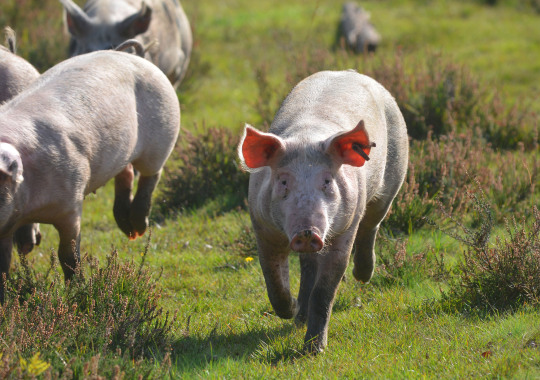
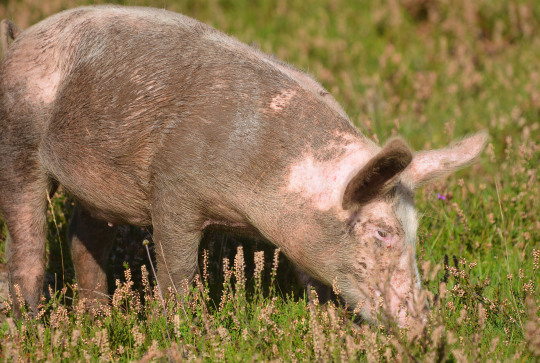
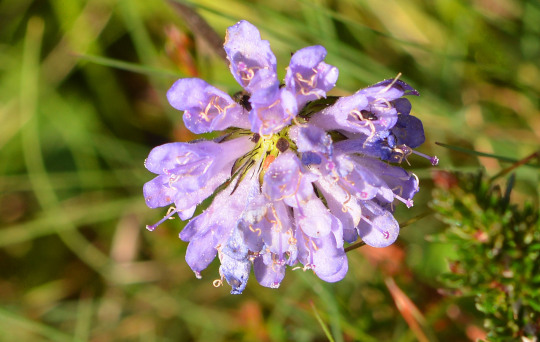
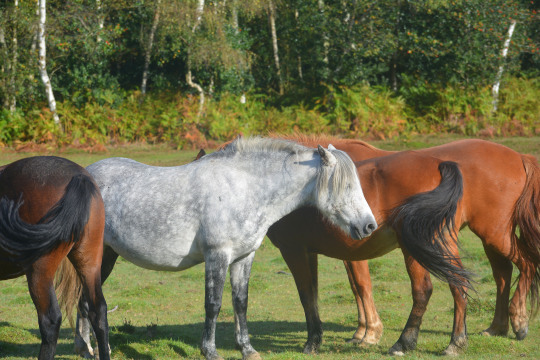
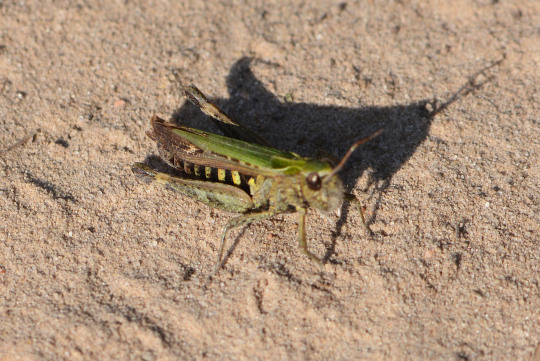


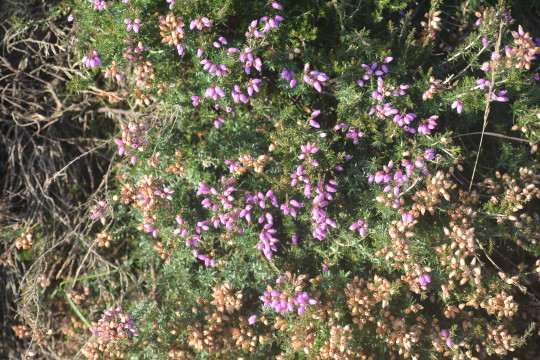
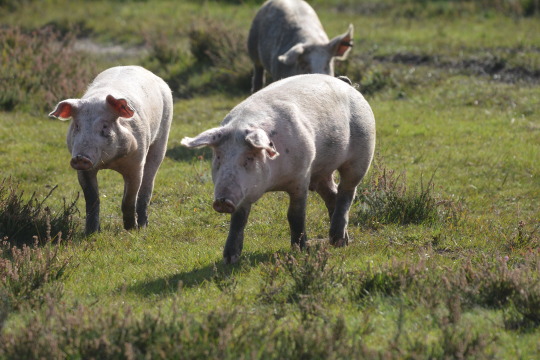

8th October 2023: Pig Bush in the New Forest and bits at home
Pictures taken in this set: 1, 2, 9 and 10. For only the second time for us at Pig Bush and never quite as close to the car park as this, some pigs, my first seen out for pannage this year (the commoner's right to turn out pigs in the forest to eat the harmful to ponies acorns). It's always a charming and feel good part of a New Forest autumn seeing these out and I love seeing it. When they bounded towards us today it was joyful and hearing them crunch as they munched the acorns was really nice to appreciate which I hadn't as much in previous years. 3. A key flower here at this time of year which I've had a great year for, devil's-bit scabious. 4. Some New Forest ponies, it was good to see these well today. 5. The first Woodland Grasshopper I've ever knowingly seen which was nice. 6. A pretty dor beetle. 7. A lovely daisy. 8. A beautiful bit of heather in flower.
My first ever betony or common hedgenettle and my first bogbean of the year were other exciting moments on the walk. Other highlights on it were a lovely Kestrel, Stonechat including an exquisite bright red one, a few Meadow Pipits heard and seen well, Long-tailed Tits, Blackbird, Carrion Crow, loads of thrilling Red Admirals including an amazing view of one right at the start drifting over me at the car park allowing for a lovely view from below, Speckled Wood, Migrant Hawker, Common Darter, a few bees, a hornet and a slug. Other standout plants seen today were tormentil, hawksbit, lovely yellow gorse, white clover, bog asphodel leaves, rose hips, holly berries, hawthorn berries and acorns. A fly and spiders including Long-bodied Cellar spider, House Sparrow, Collared Dove, Starlings and Robin in the forsythia hedge across the road were nice moments at home today.
#pig bush#new forest#england#uk#hampshire#earth#nature#world#tormentil#pig#pannage#autumn#sunny#speckled wood#red admiral#carrion crow#blackbird#happy#stonechat#kestrel#birdwatching#photography#woodland grasshopper#2023#october#weekend#europe#walk#walking
4 notes
·
View notes
Text
Woolly Hedgenettle — FOTD Jan 08
Hi all My latest post for Cee’s FOTD. Woolly Hedgenettle I did an AI watercolour transformation for these nettles.Woolly Hedgenettle — FOTD Jan 08

View On WordPress
0 notes
Text
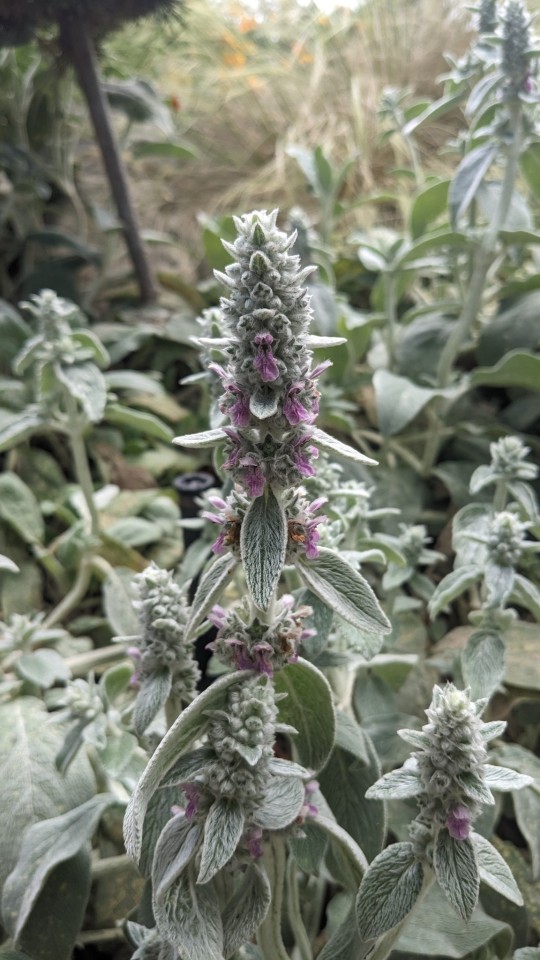
Stachys byzantina 'Silver Carpet' / 'Silver Carpet' Lamb's Ear at the Sarah P. Duke Gardens at Duke University in Durham, NC
#Stachys byzantina 'Silver Carpet'#Stachys byzantina#Stachys#Lamiaceae#Silver Carpet Lamb's Ear#Lamb's Ear#lambs ear#Woolly hedgenettle#Plants#Flowers#Nature photography#photographers on tumblr#photography#Sarah P. Duke Gardens#Duke Gardens#Duke University#Durham#Durham NC#North Carolina#🌺🌻
12 notes
·
View notes
Text
Woolly Hedgenettle -- FOTD Jan 08
Hi all 👋 My latest post for Cee’s FOTD. Woolly Hedgenettle I did an AI watercolour transformation for these nettles.
0 notes
Text
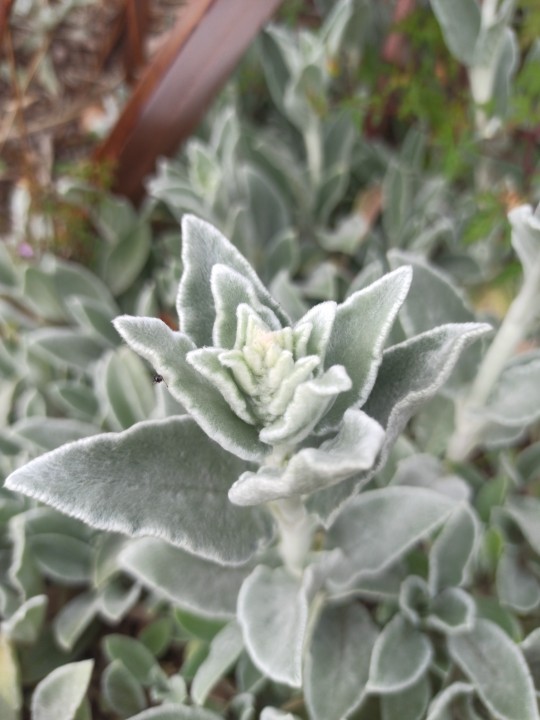
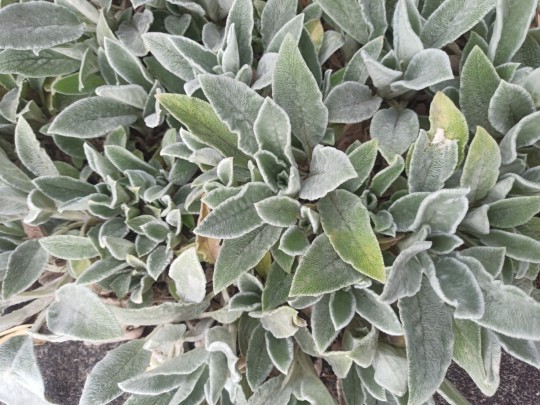
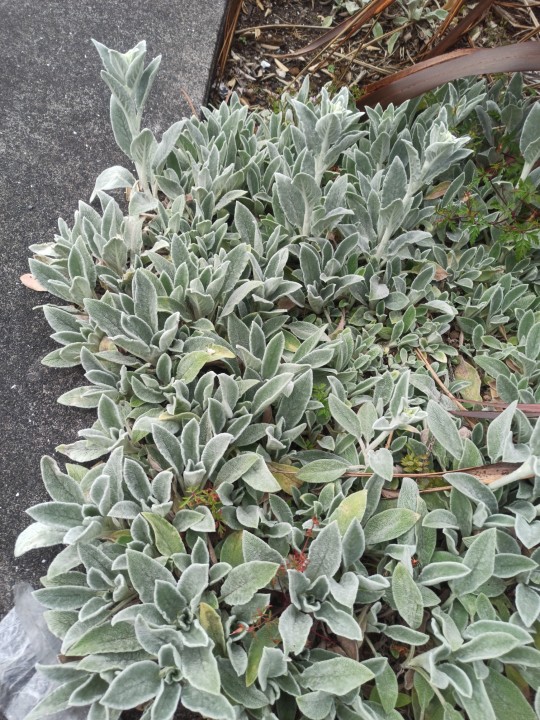
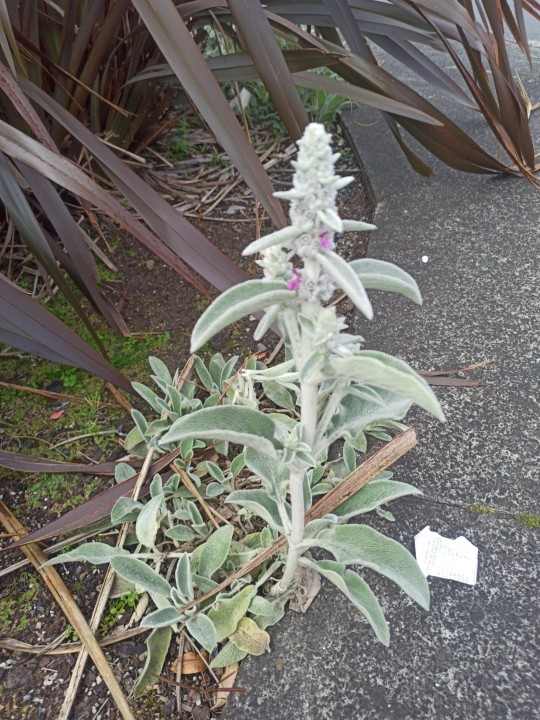
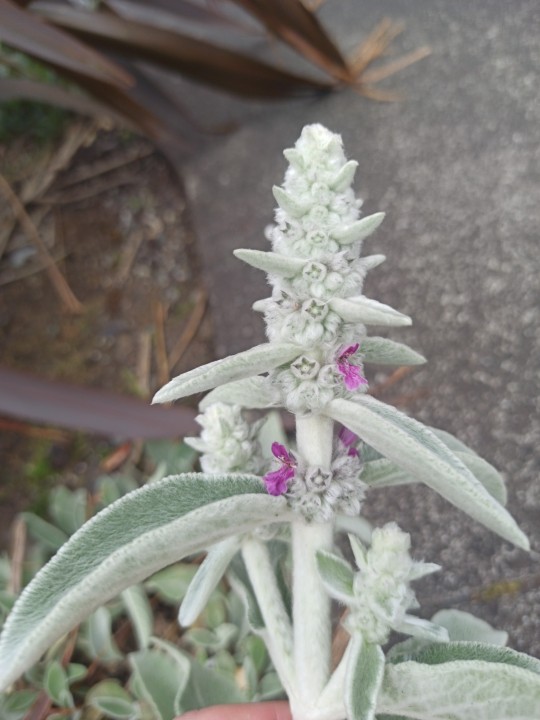
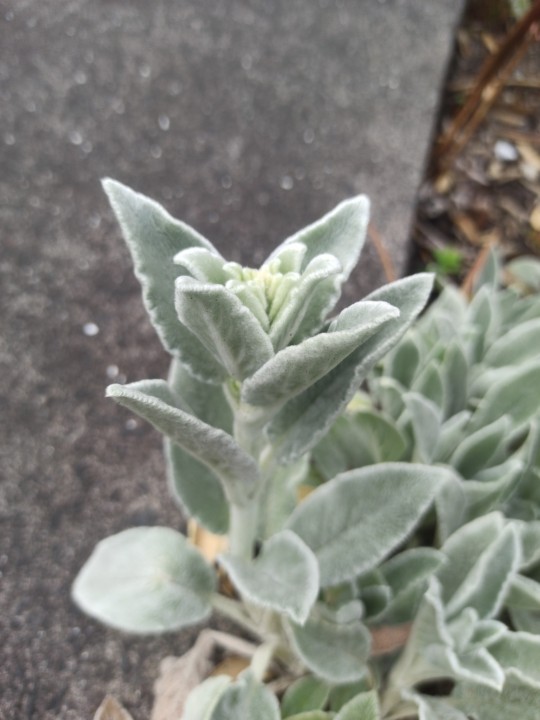
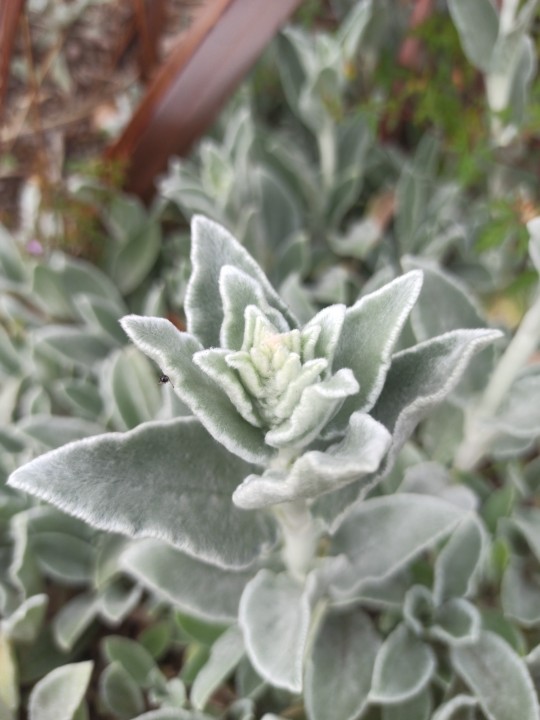
Stachys byzantina (syn. S. lanata), the lamb's-ear (lamb's ear) or woolly hedgenettle, Stachys lanata or Stachys olympica.
Чистец византийский — вид многолетних травянистых растений рода Чистец (Stachys) семейства Яснотковые.
native to Armenia, Iran, and Turkey.
Clade:Eudicots
Clade:Asterids
Order:Lamiales
Family:Lamiaceae
Genus:Stachys
In Brazil it is used as an edible herb, called peixinho-da-horta prepared battered and deep-fried sprinkled with lemon juice and said to taste fish-like. wool carder bee collects the fuzz from the leaves to use for making nests in decayed wood, bumble bees congregate in morning hours to collect the water condensation that has accumulated on the leaves.
Stachys byzantina extract has shown antimicrobial activity against Staphylococcus aureus that is resistant to vancomycin.
are used for the treatment of wounds, dysentery, epilepsy, digestive disorders, rheumatic disorders, and neuropathy. Infusions of dried leaves are good for colds, gum and throat infections, and asthma. Also, leaves simmered and cooled can be used as an eyewash for sties.
Due to its relatively high rate of evapotranspiration, Stachys byzantina is a potentially useful species for rainwater retention and therefore flood prevention.
Extremely easy to grow.
Совершенно удивительный пушистик.
Unnamed Road, Westgate, Auckland 0814
5JH6+9CG Auckland
-36.8215640, 174.6110640
наземные растения цветковые травы съедобные лечебные милые
0 notes
Text
Introduction/Table of Contents
Welcome to my garden!
I will be placing plant information here as I learn it. The plants this blog will be focusing on will be ones that I am currently interested in, am planting, or have identified on my own. Each post will contain the plant name, scientific name (if I was able to figure it out which plant I have), how to plant it, care for it, harvest it, save seeds from it, and if it companion plants with other plants (with links hopefully). If you’re interested in Herbs and how to heal with them, you can check out my blog @herbalist-thalkon where I will be updating my research into healing with plants. There will most likely be cross posts, but the posts on this side will deal with more growing and maintaining the plant, whereas the posts on my other blog will have more information on recipes, healing properties, and anything else that I felt was needed to be added to the posts. So, without further ado, the table of contents.
Table of Contents
Pincushion Peperomia
Lace Aloe
Eve’s Pin Cactus
Hobbit Jade Plant
Pennyroyal
German Chamomile
Calendula
Wormwood
Statice
Tansy
Rover Bellflower
Norway Maple
Yellow Sheep-Sorrel
American Burnweed
English Ivy
Munson’s Grape
Sweet Rocket
Pigeonberry
Shepherd’s Purse
Taraxacum Campylodes?
Bird’s Rape
Hairy Crabgrass
Jesusplant
Motherwort
Slender Yellow Woodsorrel
Sun Spurge
Prostrate Knotweed
Jagged Chickweeds
Rhubarb?
Fat-Hen?
Epipactis Helleborine?
Hoary Bowlesia?
Borage?
Bishop’s Weed?
Stiff Hedgenettle?
Hedge Woundwort, Whitespot?
Vitis Vulpina (Frost Grape)
Canadian Goldenrod
Garlic Chive
Peach Tree
1 note
·
View note
Text
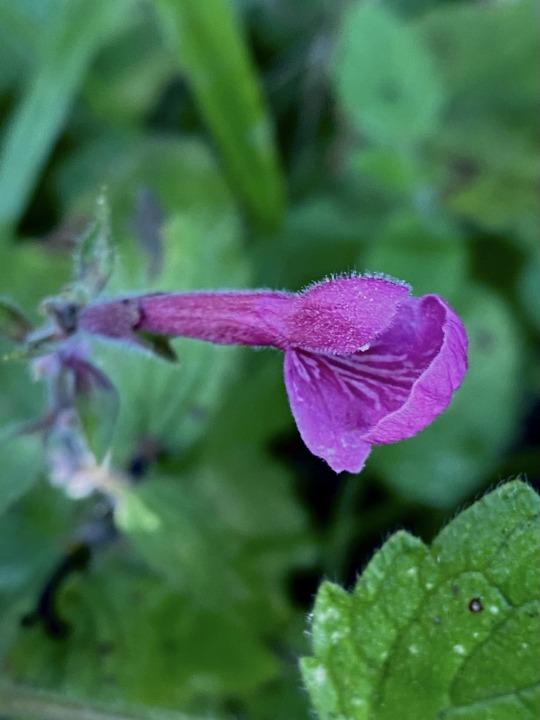
out reach..
141 notes
·
View notes